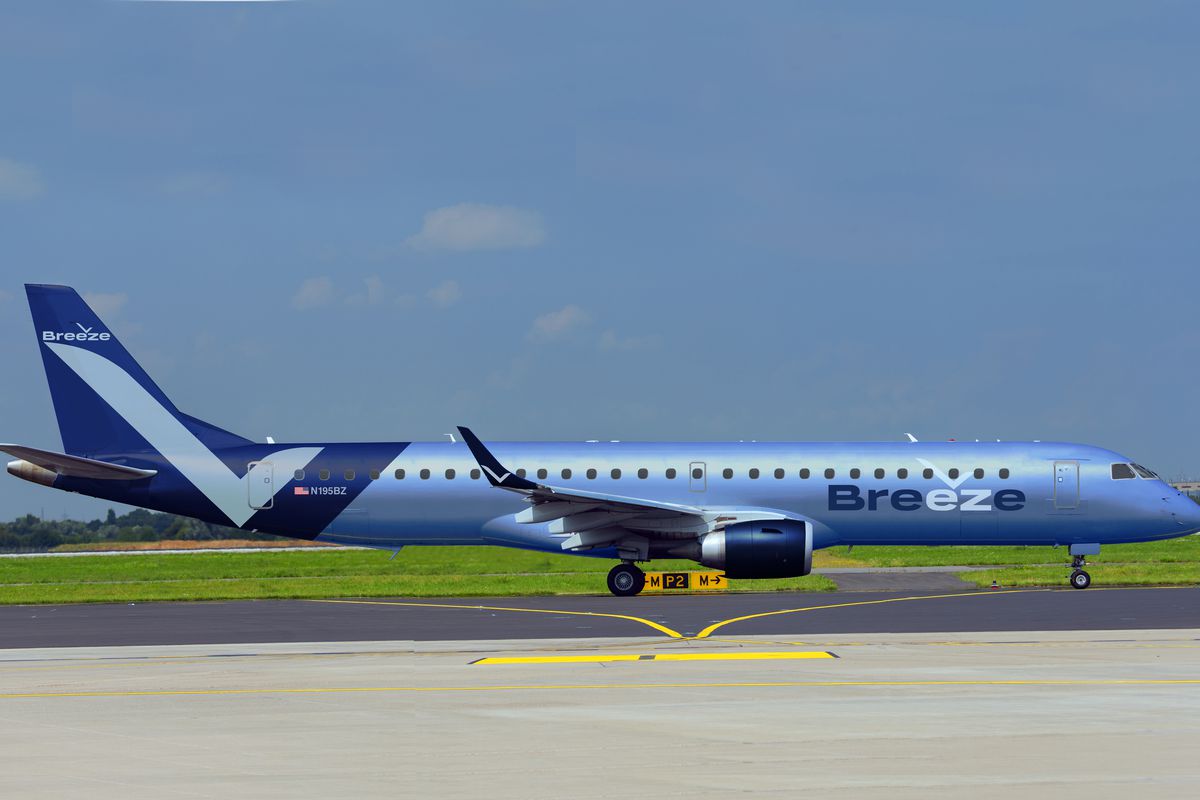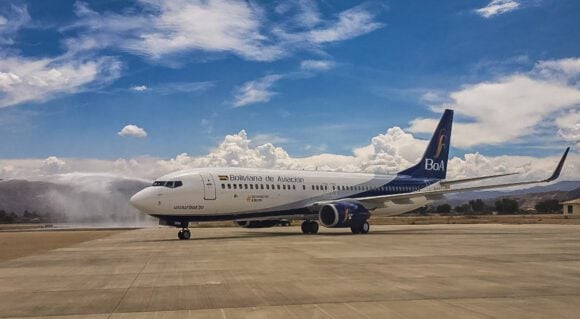
BREEZE EMB 195.0
US-start up Breeze Airways is on schedule for a summer launch as it is at the tail end of the FAA approval process. Founder and CEO David Neeleman gave an update during the online World Aviation Festival on April 19 when interviewed by Bloomberg’s Chris Jasper.
Maybe to the surprise of those watching the interview, Neeleman revealed that the pandemic actually hasn’t played a role whatsoever in his preparations. Actually, it has, as Breeze was originally planned for a late 2020 start. The airline has started recruiting, sourced its first secondhand Embraer E190s and E195 (two each so far out of a combined five in total), and is finalizing the development of its smart app. The carrier should receive its Airline Operator Certificate (AOC) soon, so it can start with operations to mid-sized US cities. “Once the approval rounds are OK, I hope to be fine this Summer.” Which will be another airline after Neeleman was involved with Morris Air, WestJet, JetBlue, Azul, and TAP Portugal.
Ownership costs Embraer-fleet have come down dramatically
Breeze has sixty Airbus A220-300s on order since the 2018 Farnborough Airshow when it was announced as a “future US airline” later called “Moxy”. The first is scheduled to join in October and start services from December or January. Until then, it’s up to the Embraer-fleet to accommodate the carrier’s entry into service.
The ex-Azul aircraft make a compelling sense from a business point of view, says Neeleman. It will give Breeze an edge on some very strong competitors: “We talk a lot about available seat per mile (ASM) costs, but trip costs are obviously very important. We start with the E190/195. I know that aircraft very well from JetBlue and we built Azul with the E195. The ownership costs have come down dramatically by some seventy percent. And then when the aircraft are parted out although they are only seven, eight, or ten years old, you can significantly lower your maintenance costs from a part or engine point of view. What allows it to do you from a trip cost point of view is to fly between points that are not being served today.”
Neeleman, who discussed his plans with Airinsight back in August 2019, says that eighty percent of Breeze’s summer schedule has no non-stop competition. “So you actually generate six to ten times more traffic than you generate from someone else.” It’s this ‘niche’ that Breeze wants to exploit without entering into direct competition with other low-cost airlines, let alone the legacy carriers. “The capital costs are very low. Because the overhead costs are very low and because the trip costs will be very low, we can offer low fares and we can go into markets that maybe haven’t been viable for airlines that have larger airplanes.”
Extra tank gives A220s 500 miles extra range
David Neeleman plans to continue to operate a mixed Embraer and Airbus A220 fleet. The arrival of the A220s will be very important. “The A220 obviously are new airplanes, the capital costs are higher. They are not inexpensive aircraft but they are very inexpensive to operate. Our A220s will burn less fuel per hour than our E190s. So we have a larger airplane with a lot of range. We actually fly them from Florida to points in Central and South America.”
Breeze’s A220s will have an auxiliary fuel tank that will give it another 500 miles of range or 4.000 in total that opens up routes to Europe or Hawaii. “In that case, you can have a seat-mile cost that is very similar to a wide-body but a trip cost that is seventy percent less.” Compared to an A321LR (he knows well from TAP – RS), trip costs should be 20-25 percent lower, which allows for extra premium seating to further improve yields.
New app should move boundaries
Instrumental to Breeze will be the way it does business. Customers will be able to do all bookings, cancelations, refunds, hotels, and extra’s using an app that should be different from other apps. The product has been under development for the last eighteen months and should give the start-up an edge over competitors. “As technology has evolved, people don’t want to stand in line even when someone is smiling. They’d rather just book themselves, check themselves in, check their own bag, just drop it off, scan themselves on the plane, rather not talk to anyone, and if they have a question they can talk to anyone online. That’s what people want today.” And certainly soon, as Breeze Airways is on track for a summer launch.
Views: 2




Neeleman was gone from JetBlue well before the A321 was an idea, much less the A321LR. He was at TAP for the launch of the latter, however.
And for all the talk about the app revolution, no airline has ever demonstrated it as a difference-maker. I understand that he wants that to be the case with Breeze, but suggesting it a fait accompli given zero evidence in the market that it influences passenger behavior or airline success is mighty premature.
I will correct the remark on the A321. The app is how he thinks/hopes it will work out for Breeze. What I have heard from Air Asia last year, their app has generated significant business.